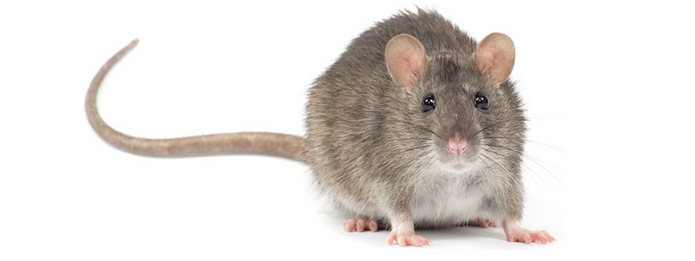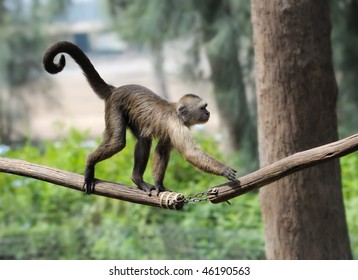Homologous traits are organs or skeletal components of animals and life forms or even humans that, share the same traits with the same or common ancestor. These structures don't need to appear to be identical, or have a similar capacity. The most significant part, as indicated by their name, is that they are fundamentally comparable. To fit the category for homologous traits they should have a similar ancestor as i once mentioned already. The animals that i am choosing today is a Cat a rat and monkeys and humans although these are all different animals and species they all have something in common so lets start with the animals. Monkeys rats and cats all come from different places but a are different cats are animals people have in there everyday life and would even keep as a pet so are monkeys and rats but they are less common for people to have as pets.Monkeys are usually in tropical forest in Africa central america and Asia along with many other places its rare you fine one in a forest in California rats and cats on the other hand you can find those any where. what the rat cat and monkey share is it tail.The Tail is the extension of the torso. Its made of flexible vertebra There tails are made to help them move to even use as a weapon to fight off insects and they also help balance the animal especially cats.Us Humans posses a similar future to those animals that i just mentioned its our tailbone reading this your probably like what how but stick thought to let me explain our tailbone also and extension of our torso like cats rats and monkeys o once thought to once been a fully formed tail by scientists a long time ago the fact our tailbone resembles and animal tail gives us the link to make this homologous traits.



Analogous Traits
The Duck and the platypus have analogous traits they share similarity's due to there beak or nose and they both lay eggs. they are both built the same and force to be similar due to there environment. Despite there body looking similar in ways the duck and the platypus are not the same. they come from different families which i will explain soon and they have similar and different traits platypus are primarily found in the east and south coast riverbanks of Australia they primarily are in water but will come on land to dig burrows. Ducks you can find everywhere in the world except Antarctica because it to cold Among birds, both New and Old World vultures look similarity the same as, both have featherless necks and heads, and feed on really fish. Be that as it may, aside from these likenesses, they have a place with various families. The previous ones have a place with the Cathartidae family, though the last has a place with the Accipitridae family. New World vultures utilize both, feeling of smell and vision to chase for prey, though Old World vultures utilize just faculties of vision for preying purposes and can recognize a 3-foot prey from roughly 4 miles away. New World vultures have a more grounded feeling of smell than the Old World vultures. Probably the best model in this situation is that of the duck-charged platypus, which is an egg-laying warm blooded animal. This social evolution is predominantly found in birds if there should arise an occurrence of vertebrates. In spite of the fact that the platypus appears as though a feathered creature and lays eggs, it isn't identified with the avian family by some other characteristic. So this is how they share analogous Traits they both lay eggs
Homology: You made this more difficult for yourself by comparing three (or four?) different organisms here. The guidelines just asked you to compare two. Make sure you read the guidelines carefully so you don't do more work than necessary.
ReplyDeleteOkay on your opening section, but understand that it was difficult to parse out where you address each prompt as it is all lumped together. It would help if each prompt response was separated into its own paragraph to make it clearer. These are like papers should be formatted as such.
"The Tail is the extension of the torso."
The tail is an extension of the vertebral column, not the entire torso.
You discuss the function of the tails in rats/cats/monkeys (note that the comparison between monkeys and humans would have been a good focus), but you don't explain the function in humans. The guidelines ask you to describe the differences in structure AND function. So does the human (and ape in general) tail bone have a function? Hint: It does. :-) That needed to be included here. Also, any idea on what environmental pressure might have led humans (and all apes) to lose their tails? Why were they no longer necessary? Or perhaps it was just better to not have them? Tail loss began with Old World Monkeys... you can see how the tails of baboons are small. So perhaps they just didn't need their tails any more? Perhaps the environment had changed, had fewer trees and having a tail was no longer an advantage? It would have been appropriate to try to understand *WHY* this difference exists.
I don't see where you address the issue of ancestry and explain how this confirms that these traits are indeed of common descent? Let's just use monkeys (New World) and humans (Apes) for this as it is difficult to discuss more than two organisms for ancestry. Both human apes and New World monkeys are primates, which means that the common ancestry was an early primate prior to the rise of apes, and we know from the fossil record that these early primates had the long generalized tail structures. It was these tail structures which were passed on to these two descendant species. New World monkeys kept their tails, while apes lost theirs (for some reason), keeping the tail bone. That's what we need to know to confirm that these traits are homologous.
Google limited my comment, so I will finish it here:
Delete______________________________________
Analogy: You started off well with opening description, but then you started talking about vultures? I didn't follow this tangent, and it was unrelated to your comparison between ducks and platypi. Keep your discussion focused on your topic.
You are correct that egg-laying is an analogous trait between the platypus and ducks. The tricky part about this choice of trait is trying to understand how this approach to reproduction serves as a common advantage to these two species. Egg-laying isn't a surprise in ducks, as they are birds and birds reproduce by laying eggs. But the platypus is a mammal, and mammals usually give birth to live young. You discuss this, but the question here is *why*? That's a huge evolutionary transition, from live young to laying eggs. What environmental pressure pushed the ancestor of the platypus to evolve this trait? Some have suggested that the aquatic environment is the common factor here, but some discussion of this needed to be included here.
You have some reference to ancestry here by pointing out that ducks belong to the avian clade and the platypus doesn't (it's a mammal). But genetic distance isn't a guarantee that two traits aren't genetically related. For example, the tiny ear bones in our middle ear (malleus, incus, stapes) are homologous (not analogous) to the branchial arches of ancient fish. No kidding. So just saying that two organisms are from two different groups is not enough to confirm analogy. So how do we do that?
The platypus arose from mammals, who arose from reptiles. Birds also arose from reptiles, and they actually inherited the egg-laying trait from reptiles. So is it possible that the egg-laying trait is homologous, not analogous? Well, that depends upon how it arose in the platypus. We know that the platypus developed it's trait after it split off from mammals, who are generally placental in nature. That means this trait arose independently in the platypus relative to that common ancestor with birds. That's what we need to know to confirm that these traits are, indeed, analogous.
Good images.
One recommendation: I suggest that you have someone look over your work before you submit to give you some guidance on correcting issues of grammar and punctuation. You have a lot of good information in here, but the writing errors detract from it and make them hard to appreciate. You do yourself a disservice by not addressing these issues. The TLC at COC may offer online writing support to help you with this.